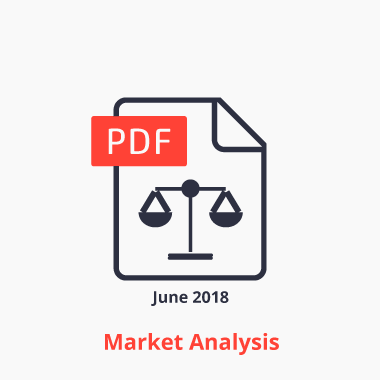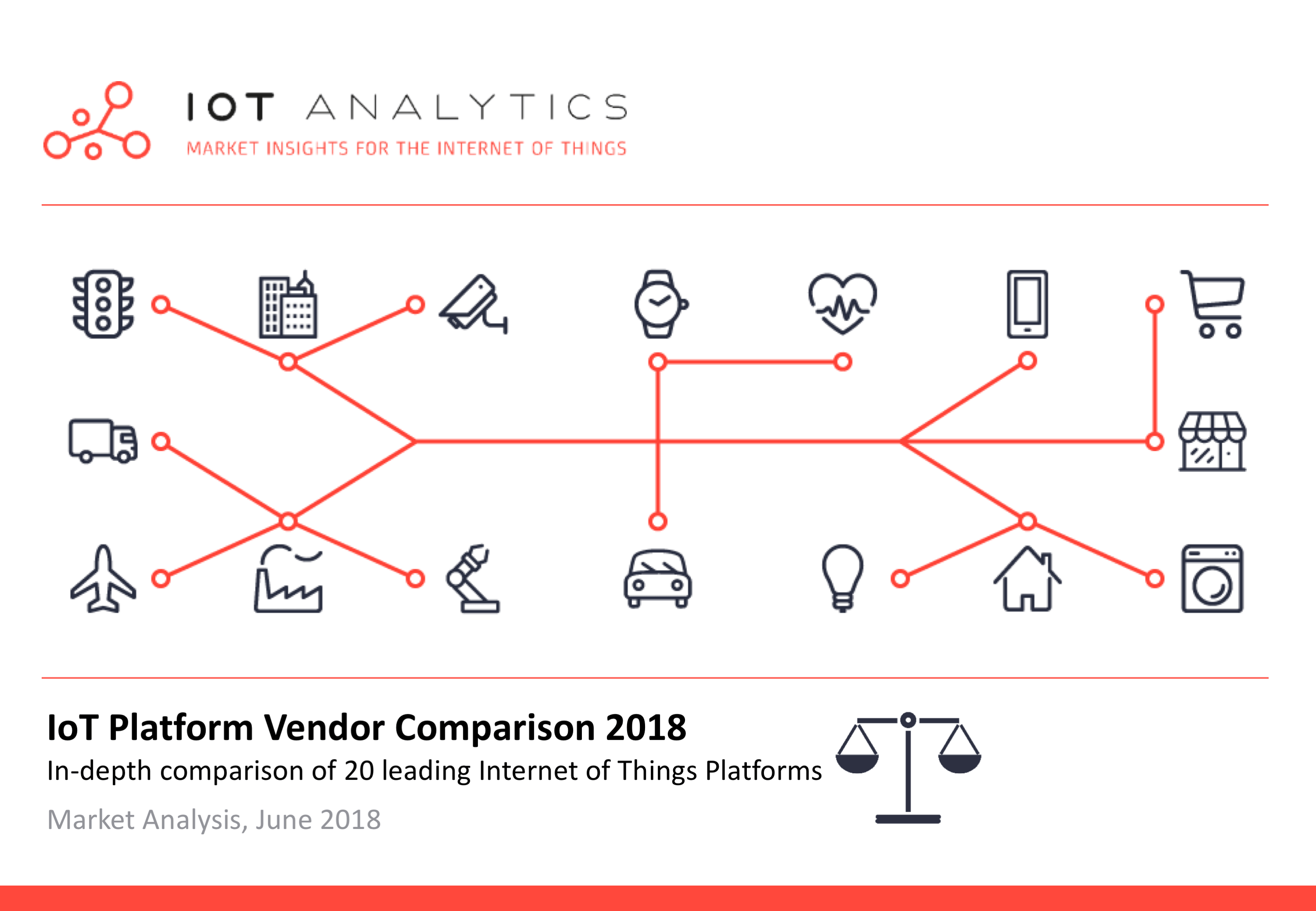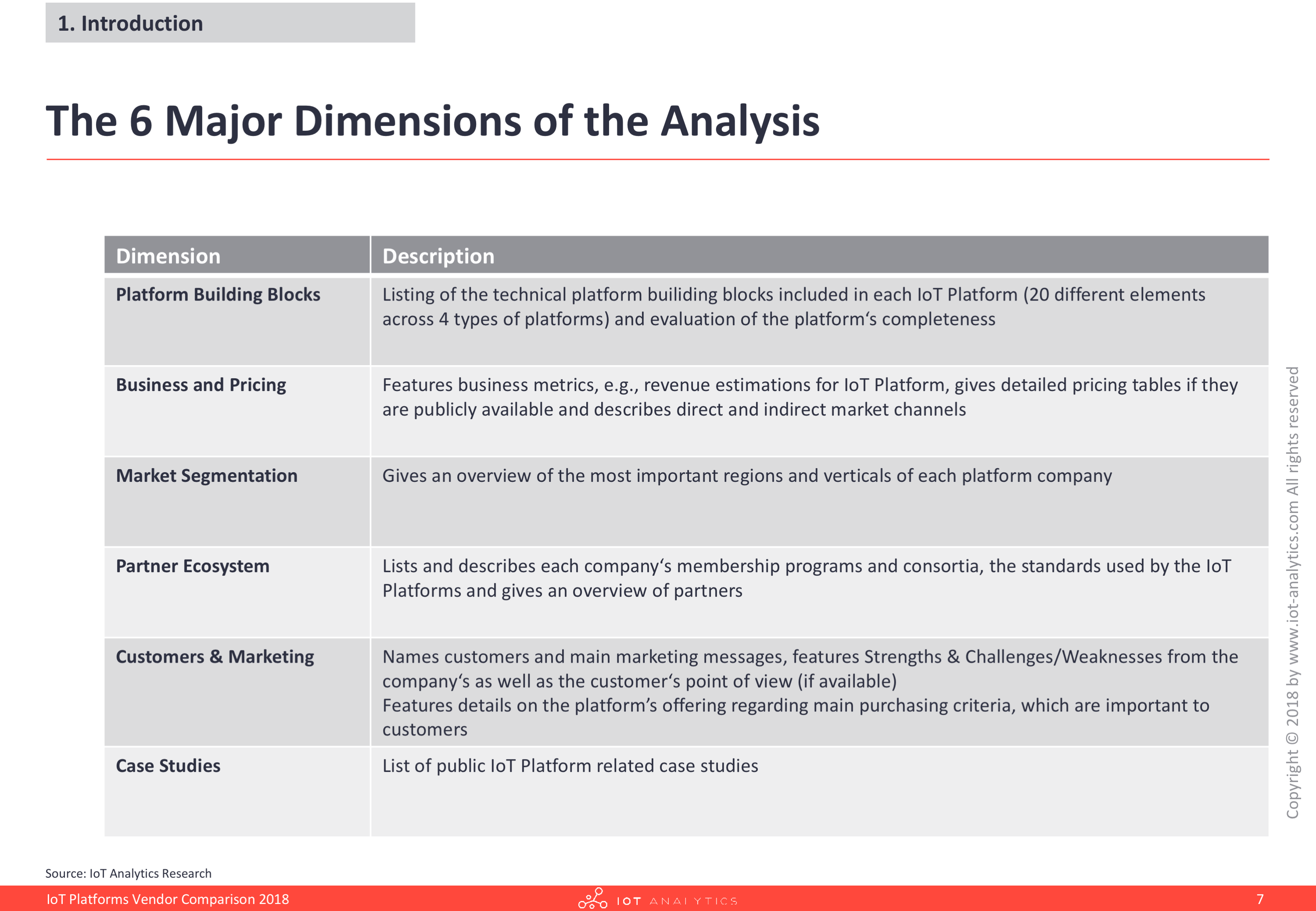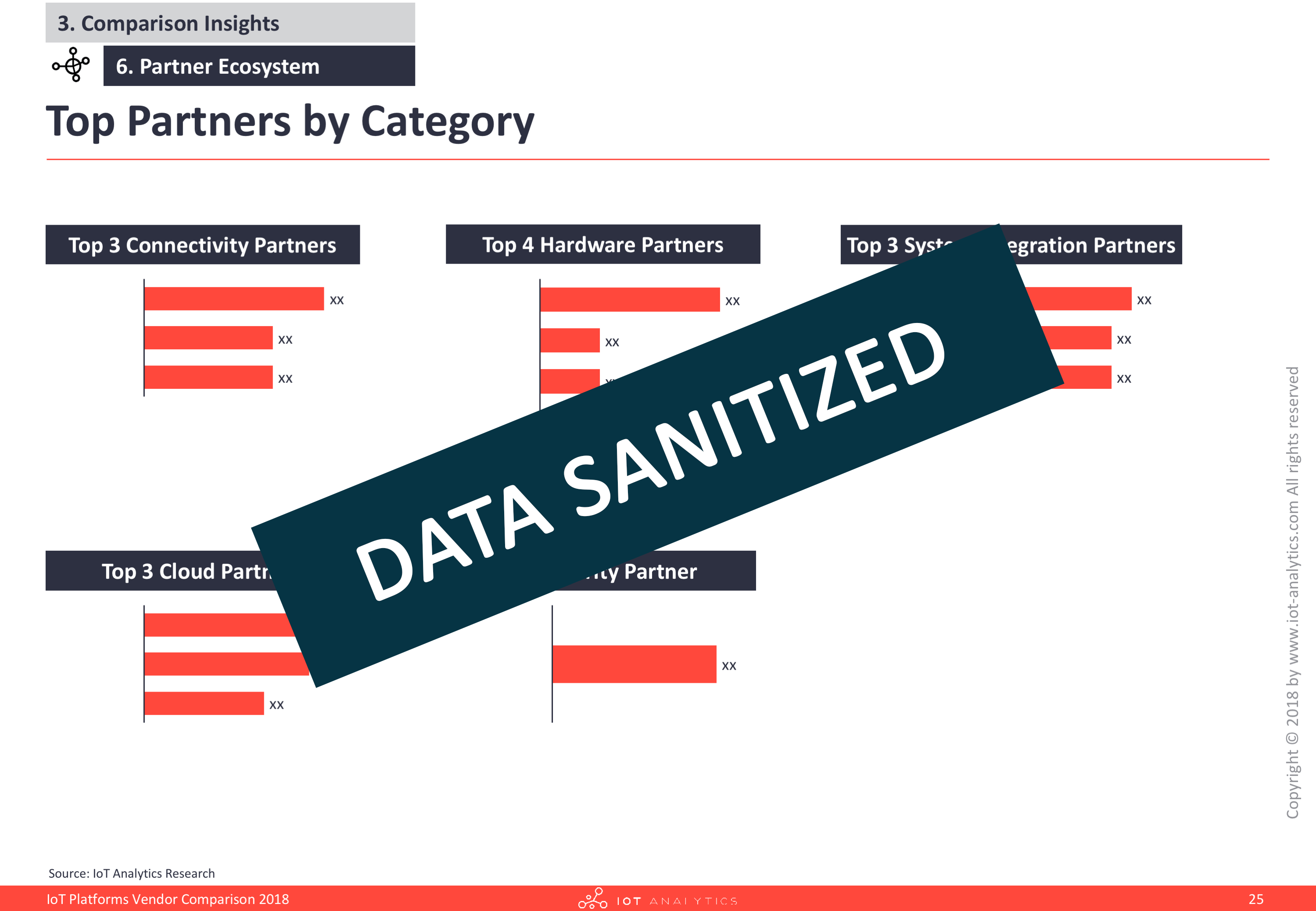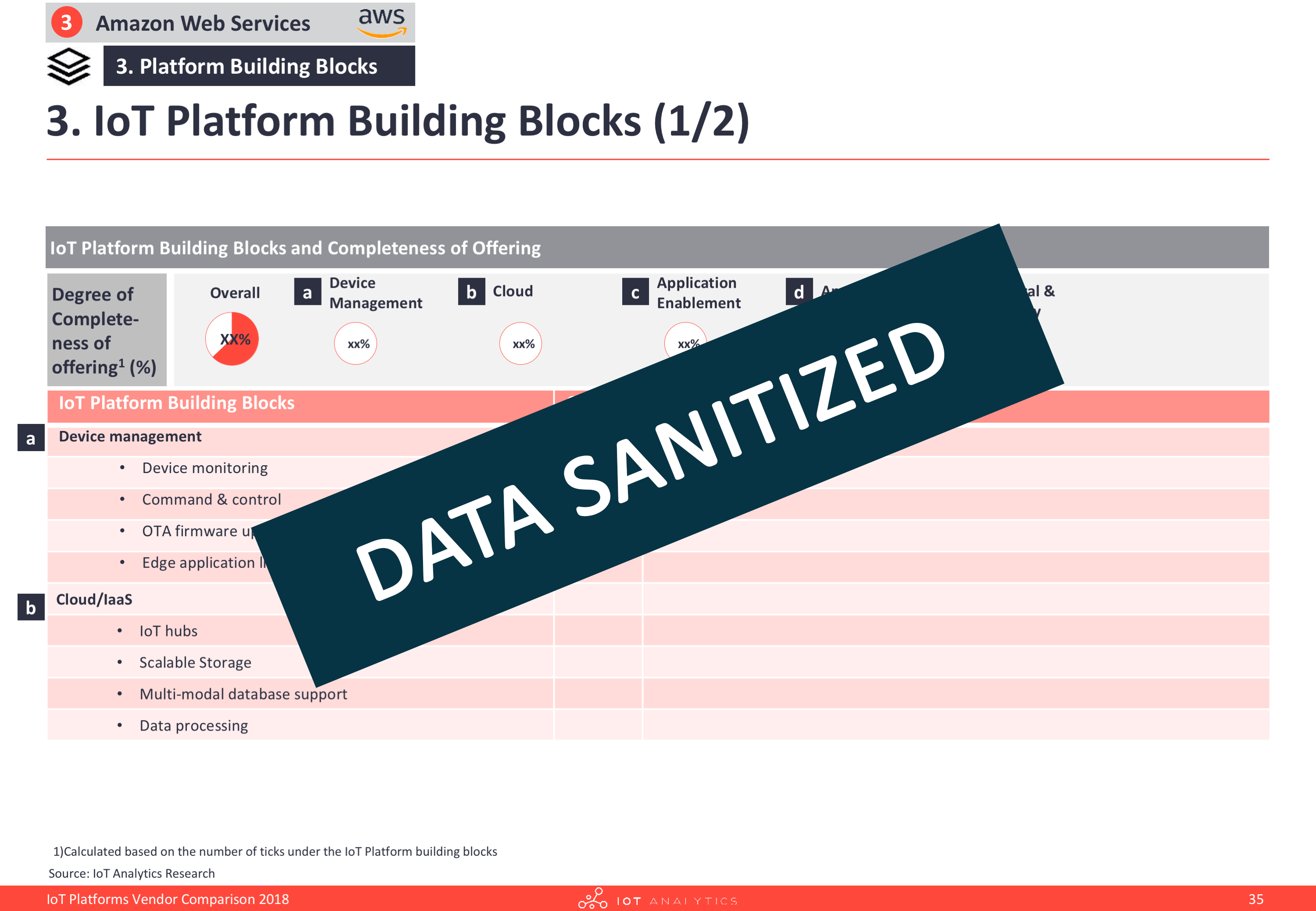Description
IoT Platforms Vendor Comparison 2018
IoT (software) platforms have emerged as a crucial enabling element for the Internet of Things.
For many companies deploying connected solutions or building connected operations, choosing a platform that is fit-for-purpose, easy-to-use, comes with the right features and provides end-2-end security has become a topic of major strategic importance.
With nearly 500 different IoT Platforms to chose from, this 450-page Comparative Analysis of IoT Platforms provides an in-depth comparison of 21 of the most popular IoT Platforms.
Read the corresponding blog post here.
Find out:
- How the leading IoT platform vendors compare
- Which building blocks are included in the different IoT Platforms offering
- Which market segments do they cater to
- In which regions are the vendors mainly active
- How are the partner ecosystems structured
- Which pricing options do the platform vendors offer
- Who are the main customers of the platforms
- What are some customers’ opinions on strengths and weaknesses of the vendors platforms
Available pricing plans:
See Terms & Conditions for license details.
Single User License
Vendor Comparison Single User License- 1 Named user (in your organization within the country of purchase)
- Complete vendor comparison in PDF
- Complete vendor comparison in PPT
- 1h Discussion with analyst team
Team User License
Vendor Comparison Team User License- 1-5 Named users (in your organization within the country of purchase)
- Complete vendor comparison in PDF
- Complete vendor comparison in PPT
- 1h Discussion with analyst team
Enterprise Premium License
Vendor Comparison Enterprise Premium License- 1 Named user (in your organization within the country of purchase)
- Complete vendor comparison in PDF
- Complete vendor comparison in PPT
- 1h Discussion with analyst team
Bundle Package options:
The Bundle Package option includes 2 reports:
- IoT Platforms Vendor Comparison 2018
- IoT Platforms Market Report 2018-2023 (see details)
Bundle: Single User License
Vendor Comparison + Market Report- 1 Named user (in your organization within the country of purchase)
- Complete vendor comparison in PDF
- Complete market report in PDF
- Market model data, 11 tables
- Bonus: 2017 List of 450+ IoT Platform Companies
- 1 h discussion with the analyst team
Bundle: Team User License
Vendor Comparison + Market Report- 1-5 Named users (in your organization within the country of purchase)
- Complete vendor comparison in PDF
- Complete market report in PDF
- Market model data, 11 tables
- Bonus: 2017 List of 450+ IoT Platform Companies
- 1 h discussion with the analyst team
Bundle: Enterprise Premium License
Vendor Comparison + Market Report- Unlimited users (in your organization within the country of purchase)
- Complete vendor comparison in PDF
- Complete market report in PDF
- Market model data, 11 tables
- Bonus: 2017 List of 450+ IoT Platform Companies
- 1 h discussion with the analyst team
At a glance:
1. Platform Building Blocks – Listing of the technical platform builiding blocks included in each IoT Platform (20 different elements across each type of platform) and evaluation of the platform’s completeness.
2. Business and Pricing – Features business metrics, e.g., revenue estimations for IoT Platform, gives detailed pricing tables if they are publicly available and describes direct and indirect market channels.
3. Market Segmentation – Gives an overview of the most important regions and verticals of each platform company.
5. Customers & Marketing – Names customers and main marketing messages, features Strengths & Challenges/Weaknesses from the company‘s as well as the customer‘s point of view (if available)
Features details on the platform’s offering regarding main purchaing criteria, which are important to customers.
6. Case studies – List of public related case studies
Note: Connectivity platforms, Hardware Reference Architectures or MVNOs – all of which are sometimes referred to as IoT Platforms are not considered in this report.
Preview:
Selected companies from the IoT Platforms Vendor Comparison:
Accenture, ADAMOS, Amazon Web Services, Bosch, C3 IoT, Device Insight, GE, Hitachi, Huawei, IBM, Kaa IoT, Microsoft, Mnubo, PTC, SAP, Schneider Electric, Seluxit, Siemens, Sierra Wireless, Software AG, Telit.
Request sample:
Request a sample of the IoT platforms vendor comparison:

